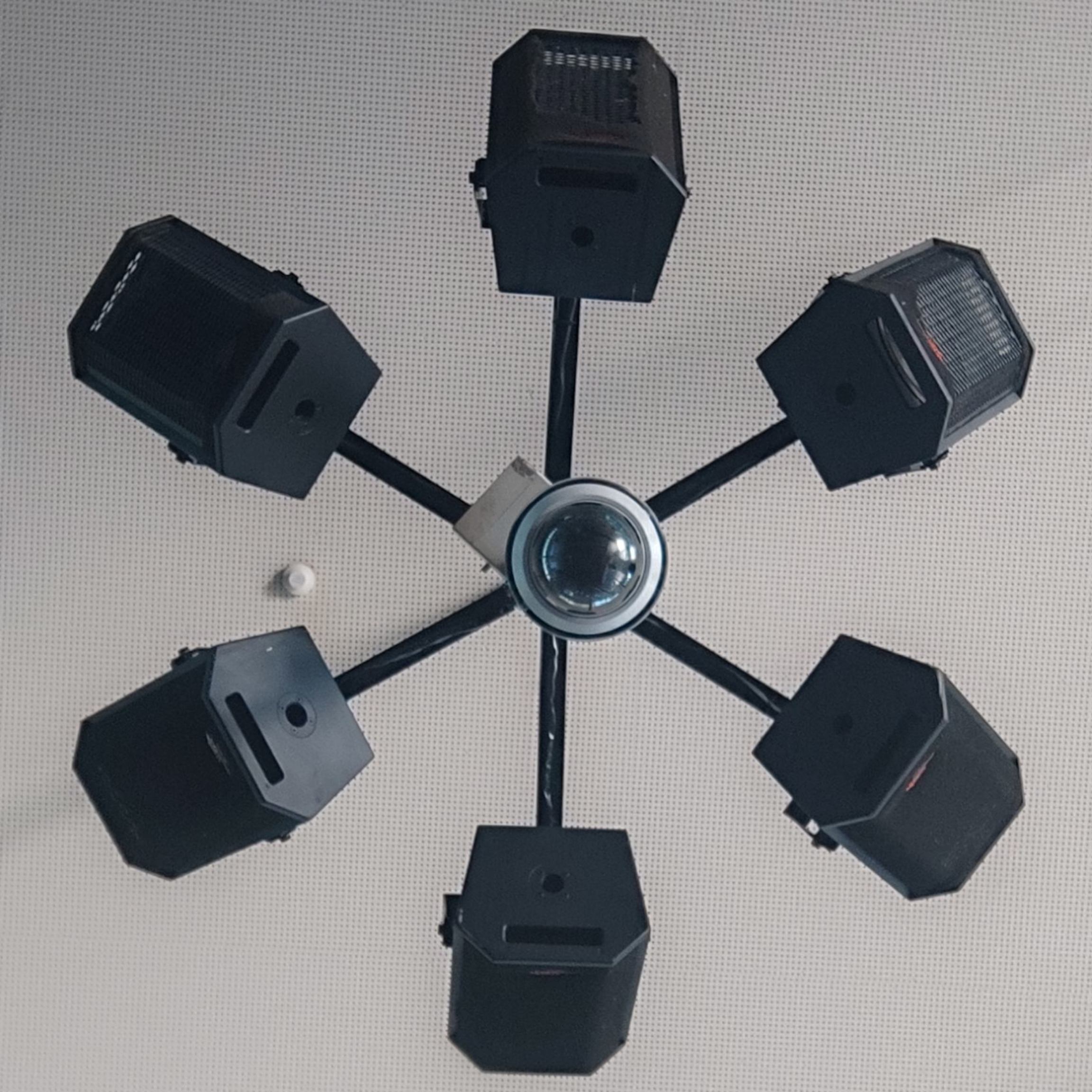What storage software could I run to have an archive of my personal files (a couple TB of photos) that doesn’t require I keep a full local copy of all the data? I like the idea of a simple and focused tool like Syncthing, but they seem to be angling towards replication.
Is the simple choice to run some S3-like backend and use CLI or other client to append and browse files? I’d love something with fault tolerance that someone can gradually add disks to. If ceph were either less complicated or used less resources I’d want to do that.
Borg Backup. It can work locally or over network. Takes snapshots of the files you give it. Performs deduplication, compression and optionally encryption. You can check the integrity of the backups and repair them. There’s a very simple to use GUI for it called Pika Backup to get you started.
Punch cards. Is it the best no but no one is going to bother to steal my data. Encryption through inconvenience
Do a riffle shuffle to make them even more secure!
that doesn’t require I keep a full local copy of all the data
If you don’t do that, the place that you call “backup” is the only place where it is stored - that is not a Backup. A backup is an additional place where it is stored, for the case when your primary storage gets destroyed.
“Local” as in the machine I am using to work on, which has a 256 GB SSD. Not as in “on-site” and “off-site.”
In the IT world, we just call that a server. The usual golden rule for backups is 3-2-1:
- 3 copies of the data total, of which
- 2 are backups (not the primary access), and
- 1 of the backups is off-site.
So, if the data is only server side, it’s just data. If the data is only client side, it’s just data. But if the data is fully replicated on both sides, now you have a backup.
There’s a related adage regarding backups: “if there’s two copies of the data, you effectively have one. If there’s only one copy of the data, you can never guarantee it’s there”. Basically, it means you should always assume one copy somewhere will fail and you will be left with n-1 copies. In your example, if your server failed or got ransomwared, you wouldn’t have a complete dataset since the local computer doesn’t have a full replica.
I recently had a a backup drive fail on me, and all I had to do was just buy a new one. No data loss, I just regenerated the backup as soon as the drive was spun up. I’ve also had to restore entire servers that have failed. Minimal data loss since the last backup, but nothing I couldn’t rebuild.
Edit: I’m not saying what your asking for is wrong or bad, I’m just saying “backup” isn’t the right word to ask about. It’ll muddy some of the answers as to what you’re really looking for.
Yes, I do see that. I’m definitely getting answers to a question I didn’t intend. I was hoping for more of an rsync but that something which also provides viewing and incremental backups to an offsite. I don’t know how to phrase that, and perhaps for what I want it makes more sense to have rsync/rclone to copy files around and something else to view.
It is not that easy to understand what you want, to me it reads like you want something like Nextcloud - i.e. your own little cloud, where you can put all your stuff, and view it through the webbrowser or the nextcloud apps, and also keep selected parts of your stuff in sync with your devices (or automatically upload photos take with your smartphone for example).
Backup of Nextcloud (or whatever you want to use) is a seperate topic. Any incremental backup tool would apply though, so there’s much to choose from. I personally use btrbk which uses Btrfs Send+Receive to push incremental snapshots to an offsite server.
I use Borg Backup to a Hetzner storage box but doing the same thing to a disk array would work fine. How much data are you talking about? What is the usage picture? Backup and archiving are really not the same thing.
I was looking at Borg but that’s one of the tools where it seems like I need the entire replicated copy of the dataset locally to add more. I believe Borg can open a view into previous versions of the data, so it’s technically append only, but I’d find that process tedious.
These are a couple TB and mostly photos I’ve taken. I’d like to be able to browse and edit at some point, but my primary concern right now is keeping a copy of everything.
Yeah that’s more of an archive than a backup scenario. I have a small self hosted Nextcloud that I use for stuff like that. For a few TB, you might consider Hetzner Storage Cloud which is really Nextcloud. It is backed up daily which is a help.
How was it setting up and running Nextcloud? I’m very curious about their office software, looks fun.
As I remember, setting it up was kind of a pain, but once runnnig it hasn’t neded attention. I don’t use the fancy apps. Also, by now there might be an apt package or docker container or something of that sort. I haven’t used their fancy apps much. My main use of it is to upload photos from my phone so I can access them from other devices.
Rsync is liiiiifffeee
Rclone.org is poetry then ;)
deleted by creator
Are we talking personal offsite backup, or a commercial cloud service?
For cloud backups I like BackBlaze but I’ve never tried to use it as a general cloud storage drive.
This would be self-hosted and local, one of the locations in a 3-2-1 strategy. BackBlaze would work for an offsite but I already have that portion covered.
that doesn’t require I keep a full local copy of all the data
So you want a local self hosted backup, but also not a full copy? So like backup only recently changed files?
I want like one local device to have a full copy, but the devices writing new data into that one do not need a full copy.
I think you just described using a NAS as primary storage.
Do you have a software you like for that?
Open Media Vault
I’ve been using TrueNas with a nightly sync to Backblaze for years and I like it.
It used to be called FreeNas and used FreeBSD. Now the BSD version is called TrueNas Core, and a new Linux based version is called TrueNas Scale.
I would go with TrueNas Scale if I were starting a new one today. You probably won’t use the “jail” functionality immediately, but they’re super handy, and down the line if you start playing with them, you’ll run into fewer compatibility issues running Linux vs BSD.
It’s basically a RAID + File shares like SMB.
Loads of DIY options, but I use a Synology so I don’t need to mess with anything.
In technical terms you mean doing an incremental or differential back up to a local network storage location, correct?
“Incremental” sounds right. I want it to act like rsync without deleting files on the destination, so all the folders are merged. (It would be cool if it kept versions but I don’t absolutely need that.) Tools like Borg or Restic look great, but I have been searching to see if they support this kind of usage and they seem not to.
rsync and another hard drive
I use rclone, with encryption, to S3. I have close to 3TB of personal data backed up to S3 this way - photos, videos, paperless-ngx (files and database).
Only readable if you have the passwords configured on my singular backup host (a RasPi), or stored in Bitwarden.
This alongside using Backblaze is what I would suggest assuming you are thinking online. Cheap and reliable, also relatively easy via a cron job. https://help.backblaze.com/hc/en-us/articles/1260804565710-Quickstart-Guide-for-Rclone-and-B2-Cloud-Storage
Backblaze don’t have a POP in my country, unfortunately.
tarsnap makes use of S3. does a decent deduplication job as well
Would this work? https://rclone.org/
That’s top of my list for moving the files if I do an S3 or WebDAV backend. I’m overthinking this, aren’t I? Just find a WebDAV server, set it up, use rclone to append files and pretty much everything else will be able to browse.
Haha it’s easy to overthink things sometimes. I’m guilty of that. I’m using SFTPGo at home to serve files from a small server.
Sounds like something like “git annex” is what you’re looking for?
I use this to manage all my photos. It lets you add binaries and synchronize then to a backend server (can be local, can be s3, back blaze, etc).
You can then “drop” files and it ensures a remote exists first. And when you drop the file your still see a symlink of it locally (it’s broken) so that you know it exists.
My workflow is to add my files, sync them to both a local server and b2, then I drop and fetch folders as i need (need disk space? “git annex drop 2022*”, want to edit some photos? “git annex get 2022_10_01”.
rsync, for sure. That’s what I used when I had to migrate a 10TB datastore to a new machins.
All of my machines back up to my home server’s RAID over WebDAV with Nephele.
Then every few days I’ll manually sync them to a server at my parents’ house with a single huge HDD using rsync. I do this manually so that if anything happens to my home server (like ransomware) it doesn’t mirror destroyed data.
Since the Nephele share is just WebDAV, I can mount it locally and move things into it that I don’t want local anymore.
I created Nephele, and I just finished writing an encryption plugin. I wrote it because I’m also going to write an S3 adapter. That way, you can store things in S3, but they’ll be encrypted, so Amazon can’t see them.
Wouldn’t syncing automatically every few days give you the same protection though?
I’m assuming I would notice, because none of my services on the machine would work anymore.
Protection against if it happens and they have not noticed within those few days. Probably especially important if they leave the system running while on vacation.
This is really cool. I ended up trying something similar: serving from a ZFS pool with SeaweedFS. TBD if that’s going to work for me long term.
I would definitely be able to manually sync the SeaweedFS files with rsync to another location but from what I see it requires me to use their software to make sense of any structure. I might be able to mount it and sync that way, hopefully performance for that is not too bad.
Syncing like that and having more control over where the files are placed on the RAID is very cool.
Where will the target be? Online or local? Rsync is really easy to use and the target files are browse-able. I could be too dense but I find online buckets aren’t easily browse-able. Even a homemade NAS might be a good choice and it’s easily scalable.






